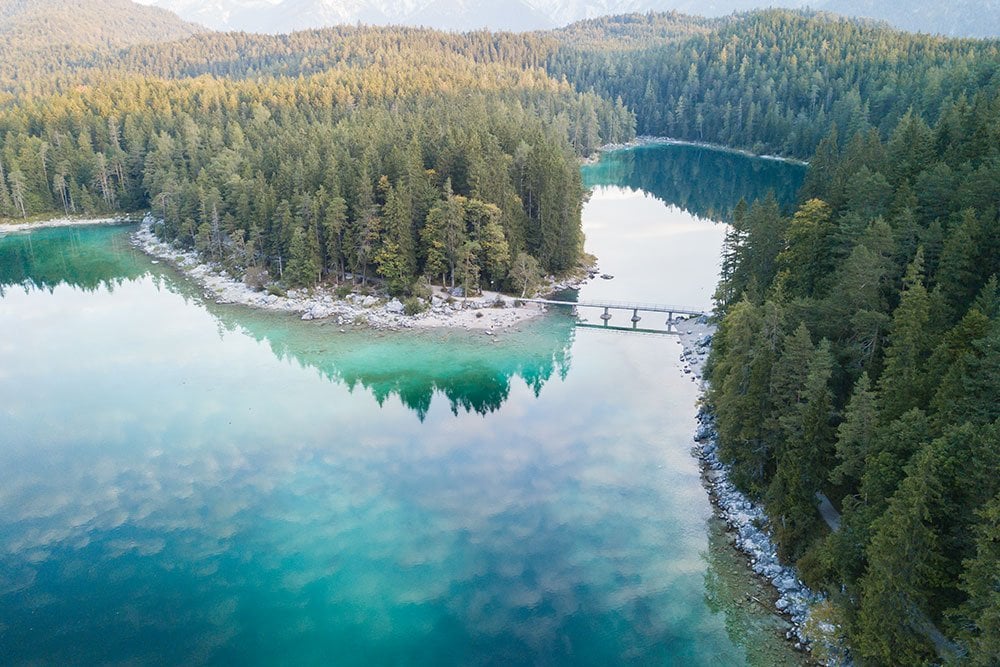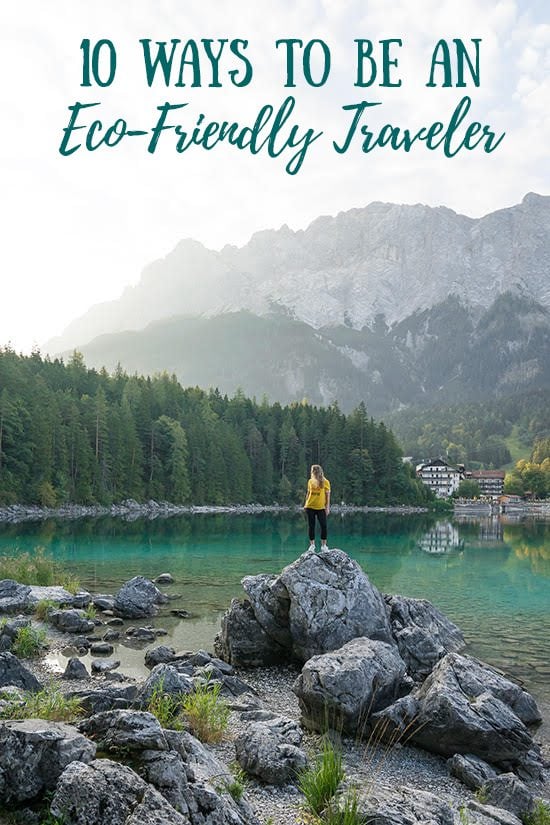How to Be a More Responsible & Eco-Friendly Traveler

From fuel, to plastic use, to local conservation, taking a trip is guaranteed to have some sort of an environmental impact — one that can vary depending on the trip and our habits. Of course this doesn’t mean that we should all stop traveling, but rather to make better choices as we do.
Becoming a more responsible and environmentally-friendly traveler means making small changes and decisions that positively impact the earth. Here are some super easy things we can all do to make ourselves more eco-friendly travelers.

How to Be a More Responsible & Eco-Friendly Traveler
Seek Out Eco-Friendly Accommodation
Did you know that there are environmental seals of approval for hotels all over the world? In the US, this is called LEEDS Approval, whereas in other areas of the world there are programs such as the Green Tourism (UK, and some parts of Canada and Italy), the Rainforest Alliance (South America), and EarthCheck (Australia).
Booking from an accredited hotel is a great place to start when looking for eco-friendly accommodation.
To go the extra mile, check and see what kind of in-house sustainability initiatives the hotel uses. For example, research if the hotel has a recycling program, uses energy efficient bulbs, has green laundry standards, etc.

Bring Reusables With You
In an effort to cut down plastic waste, it’s a great idea to bring along as many reusable items with you as possible. Consider bringing along a small silverware set (I love this bamboo travel set), metal straws, your own water bottle (they have great collapsible ones now!), coffee mug, bags, and toiletries.
This is a great idea not only for the environment, but in some cases for your wallet!
Support Local Conservation
Whether or not you plan on spending a lot of time in nature on your trip, try and support local conservation efforts whenever possible. For example, you could hire a guide service where part of the proceeds go towards conservation or donate to local efforts.
If you do plan to spend significant time in nature, always make sure to stick to designated areas to protect local vegetation, always follow a leave no trace regimen, and go the extra step and do a beach or park cleanup.
Read more: The Best Travel Cameras (And How To Choose One)

Carbon Offset
Even if you consider yourself someone who is pretty green at home, your carbon footprint will expand once you start traveling. As aviation accounts for as much as 2% of all carbon emissions, flight providers nowadays give you the option to buy a carbon credit when you purchase your ticket. If they don’t, then there are a few programs that let you buy these credits directly.
When you buy these credits, the money generally either goes into reforestation projects or energy efficiency efforts. Just be sure to do your research so you know how your funds will be used.
Eat Local
Opposed to eating shipped-in food that will further add to your carbon footprint, eat and drink locally sourced goods that are in season. This is an easy thing to do by either shopping in local markets, or by researching sustainable restaurants beforehand.
Not only can this method be healthier for you, it benefits local farmers and suppliers.
Book With an Eco-Conscious Tour Provider
If you plan on taking a tour on your trip, research the company beforehand and make sure they are part of some green initiatives. A lot of the major tour companies are part of carbon-offset program and are committed to supporting local businesses.
If the tour company is serious about their environmental impact, finding info on their website shouldn’t be too hard.

Be Animal-Aware
Being able to observe different species of animals on my trips is one of my favorite things, and yet I’m always hyper-aware of how I go about doing this.
Generally, observing animals on a trip is okay (safari’s, whale watching, etc.) as long as we’re not impacting their environment or schedules. That said, interacting directly with wild animals is generally a no-go, and harmful activities such as riding elephants are no longer being tolerated.
Follow your gut on this one, be sure to research companies that are animal-affiliated beforehand, and try to protect their natural habitats whenever possible.
Read more: Packing Light: How To Pack For Carry-On Only

Use Public Transportation Whenever Possible
Buses, while not generally the most comfortable, pretty much take the cake when it comes to environmentally-conscious transportation. Switching to public ground transportation opposed to flying will cut down your carbon footprint substantially.
Consider Your Souvenirs
Souvenirs are popular for a reason — because they’re great ways to remember a place by. That said, the best souvenirs to get are ones that benefit locals directly and have a low environmental impact.
It’s generally known to not to buy items made from Ivory or Coral, but try and go one step further when purchasing your next souvenir and buy it from a local artisan. Not only will this give money directly back into the local economy, you’ll get a way cooler item in return.
Recycle
Whether you’re at home or abroad, recycling when possible should always be a priority. Most major hotels and cities have recycling programs. If you’re worried about there not being recycling at your destination, then shed as much packaging as you can beforehand from necessities such as toiletries.
An Environmentally-Friendly Packing List
Water Bottles: I personally love to bring my Nalgene Water Bottle with me when I travel (and a Steripen for when I can’t refill from the tap), but also pack along a travel mug for days when I know I’m going to need a kick of caffeine bright and early.
Toiletry Bottles: Instead of buying those mini travel toiletries before a trip, I use refillable bottles for my shampoo, conditioner, reef-safe sunscreen, and body wash. Bamboo toothbrushes are also a great idea opposed to the plastic ones.
Cutlery: Useable for more than just camping scenarios, a set of metal or hard-plastic cutlery beats cheap plastic ones any day. And don’t forget your metal straws!
Bags: Carrying around a reusable tote on your travels is a great habit to get into, and if you’re prone to getting take-out, then a collapsible take-away container is also a great idea.
Read More:
10 Important Safety Tips for Solo Female Travelers
7 Must-Know Tips to Reduce Plastic Waste for Sustainable Travel
10 Common Travel Scams & How to Avoid Them
Insider Tips: How To Find Cheap Flights To Anywhere
The Ultimate Packing Checklist for Campers
10 Best Free Campgrounds in Northern California
The Ultimate Road Trip Packing List (Must-Have Essentials!)
My 25 Best Travel Tips After 10 Years of Traveling the World
As an Amazon Associate I earn from qualifying purchases. I’m also a member of other affiliate programs. For more info please read my Privacy Policy





Hi – Can you recommend one or two (non-flight) carbon offset programs?
Thanks.
To be honest, I have yet to find any non-flight carbon offset programs. I’d love to hear of some if you find them!
Interesting post! Thanks for sharing!